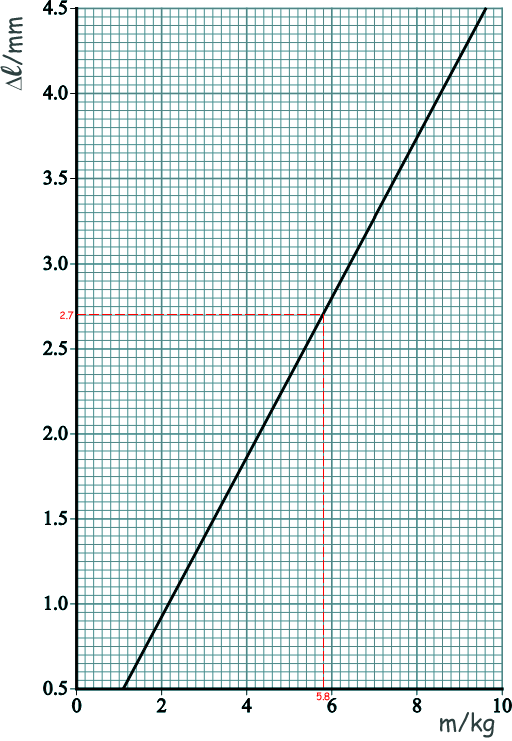Materials Q3. This question is about the determination of the Young modulus of the metal of a wire. In an experiment, two vertical wires P and Q are suspended from a fixed support.
(a) The reading on the vernier scale can be used to determine ∆l, the extension of Q. Determine ∆l using the diagram. 2.7 mm [1 mark] (b) The graph below shows how ∆l varies with m, the mass added to the hanger. Determine the mass added to the hanger shown in diagram above.
5.8 kg [1 mark] (c) Lexy uses digital vernier callipers to measure the diameter of Q. She places Q between the jaws of the callipers and records the reading indicated. Without pressing the zero button she removes Q and closes the jaws. Views of the callipers before and after she closes the jaws are shown below:
Calculate the true diameter of Q. 0.44 + 0.07 = 0.51 mm [1 mark] (d) The original length of Q was 1.82 m. Determine the Young modulus of the metal in Q.
∆l = 2.7 mm = 2.7 x 10-3 m L = 1.82 m d = 0.51 mm = 0.51 x 10-3 m A = πr2 = πd2/4 = π (0.51 x 10-3)2/4 = 2.04 x 10-7m2 F = ma = 5.8 x 9.81 = 56.9 N E = 56.9 x 1.82/(2.04 x 10-7 x 2.7 x 10-3) E = 1.88 x 1011 N m-2 [4 marks] (e) Lexy repeats her experiment using a wire of the same original length and metal but with a smaller diameter. Discuss two ways this change might affect the percentage uncertainty in her result for the Young modulus. Using a wire of a smaller diameter would produce larger extensions. But the smaller diameter would increase the percentage uncertainty in measuring the diameter of the wire [4 marks] (Total 11 marks) |
Follow me...
|








